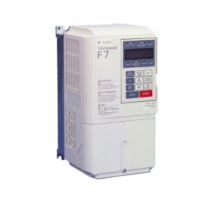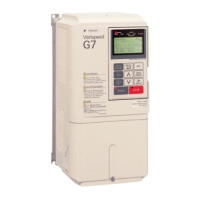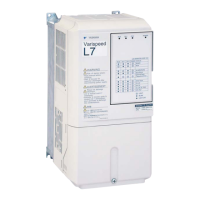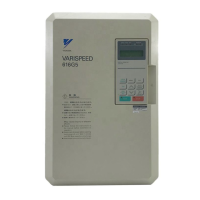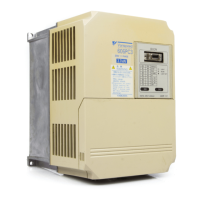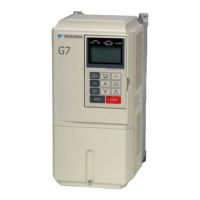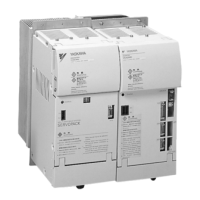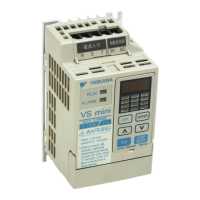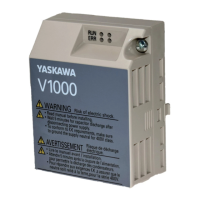Trial Operation Procedures
4-11
stationary autotuning again and run the motor using the aforementioned procedure under the recommended
conditions or perform rotational autotuning.
Usually the standard setting for E2-02 is 1 Hz to 3 Hz, and that for E2-03 is 30% to 65% of the rated current
for a general-purpose motor. Generally, the larger the motor capacity is, the smaller the rated slip and the ratio
of the no-load current to the rated current become. Use the data given in Factory Settings that Change with the
Inverter Capacity (o2-04) of Chapter 5 User Constants as a reference.
Stationary Autotuning for Line-to-Line Resistance Only (T1-01 = 2)
Stationary autotuning for line-to-line resistance only can be used in any control method. This is the only
autotuning possible for V/f control and V/f control with PG modes.
Autotuning can be used to prevent control errors when the motor cable is long (50 m or longer) or the cable
length has changed since installation or when the motor and Inverter have different capacities.
Set T1-01 to 2 for open-loop vector control, and then press the RUN Key on the Digital Operator. The Inverter
will supply power to the stationary motor for approximately 20 seconds and the Motor Line-to-Line Resis-
tance (E2-05) and cable resistance will be automatically measured.
Precautions for Rotational and Stationary Autotuning
Lower the base voltage based on Fig 4.4 to prevent saturation of the Inverter’s output voltage when the rated
voltage of the motor is higher than the voltage of the power supply to the Inverter. Use the following proce-
dure to perform autotuning.
1. Input the voltage of the input power supply to T1-03 (Motor rated voltage).
2. Input the results of the following formula to T1-05 (Motor base frequency):
(Base frequency from the motor’s nameplate × setting of T1-03)/(Rated voltage from motor’s nameplate)
3. Perform autotuning.
After having completed autotuning, set E1-05 (Motor maximum frequency) to the base frequency shown on
the motor nameplate.
Fig 4.4 Motor Base Frequency and Inverter Input Voltage Setting
IMPORTANT
1. When speed precision is required at high speeds (i.e., 90% of the rated speed or higher), set T1-03 (Motor
rated voltage) to the input power supply voltage × 0.9.
2. When operating at high speeds (i.e., 90% of the rated speed or higher), the output current will increase as
the input power supply voltage is reduced. Be sure to provide sufficient margin in the Inverter current.
Output voltage
Output frequency
Rated voltage from
motor nameplate
T1-03
0
Rated voltage from motor nameplate
Base frequency
from motor nameplate
×T1-03
Base frequency
from motor nameplate
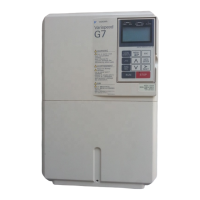
